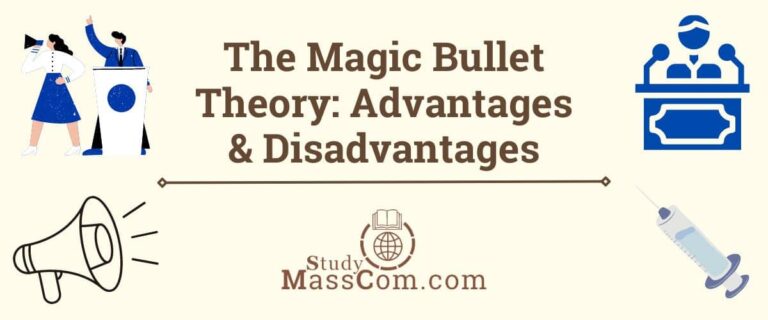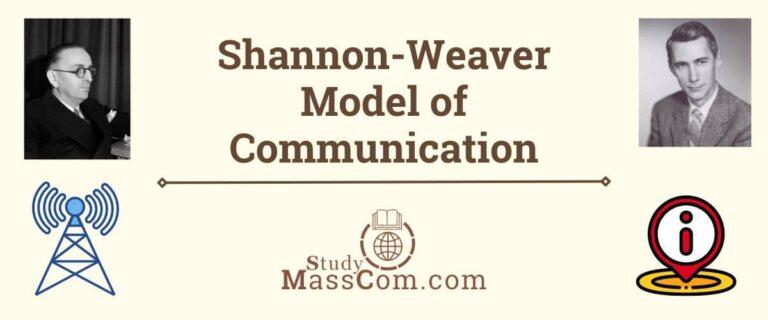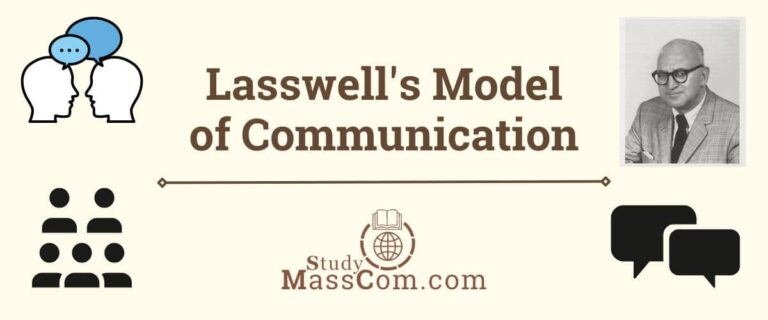Dance’s Helical Model of Communication: Explanation & Features
Communication is a complex process that involves the exchange of information, ideas, thoughts, and feelings between individuals or groups. Over the years, numerous scholars have proposed models to explain the intricacies of communication. One such model is the Helical Model of Communication, developed by Frank Dance in the 1960s. This model offers a unique perspective on how communication unfolds over time and how it is influenced by various factors. In this article, we will delve into the details of Dance’s Helical Model, exploring its components, principles, and applications.
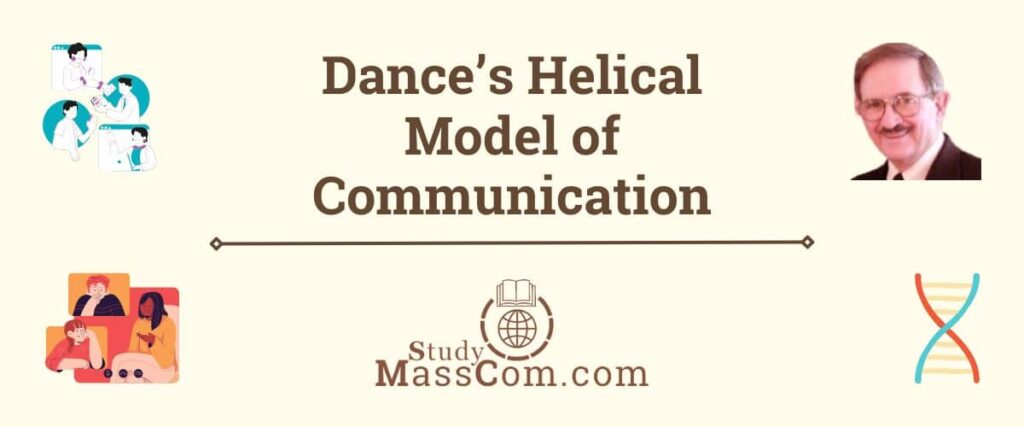
Background of Frank Dance
Frank Dance was an American communication theorist and professor who made significant contributions to the field of communication studies. Born in 1929, Dance earned his Ph.D. in Speech from the University of Illinois in 1956. He went on to teach at various universities, including the University of Denver and the University of Wisconsin-Milwaukee, where he served as a distinguished professor of communication.
Throughout his career, Dance focused on understanding the dynamics of human communication and developing models to explain its complexities. His work encompassed various aspects of communication, including interpersonal communication, group communication, and organizational communication.
Definition of Dance’s Helical Model of Communication
The Helical Model of Communication, proposed by Frank Dance in the 1960s, offers a holistic framework for understanding how communication evolves. Unlike linear models of communication that depict communication as a one-way process, the Helical Model emphasizes the dynamic and continuous nature of communication.
At the core of the Helical Model is the idea that communication is a spiral process that moves both forward and backward over time. Dance conceptualized communication as a continuous cycle of interaction, where each exchange builds upon previous interactions while also influencing future interactions. This cyclic nature of communication is represented by a helix, symbolizing the ongoing evolution and growth of communication between individuals or groups.
Read about the Osgood-Schramm Model of Communication.
Components of Dance’s Helical Model of Communication
Initiation
The communication process begins with an initiation phase, where one party initiates the exchange by sending a message. This could be verbal or nonverbal communication, such as speaking, writing, or gesturing.
Interpretation
Upon receiving the message, the other party interprets its meaning based on their perceptions, experiences, and cultural background. Interpretation is subjective and can vary from person to person.
Response
After interpreting the message, the receiver formulates a response and sends it back to the initiator. This response can take various forms, including verbal feedback, nonverbal cues, or actions.
Feedback
Once the response is received, the initiator provides feedback, indicating their understanding or reaction to the message. Feedback closes the communication loop and allows both parties to adjust their messages based on the interaction.
Learn about Newcomb’s ABX Communication Model.
Diagram of Dance’s Helical Model of Communication
Imagine a helix, like a spiral staircase, representing the continuous and dynamic nature of communication. The helix has two intertwined strands, symbolizing the interaction between communicators.
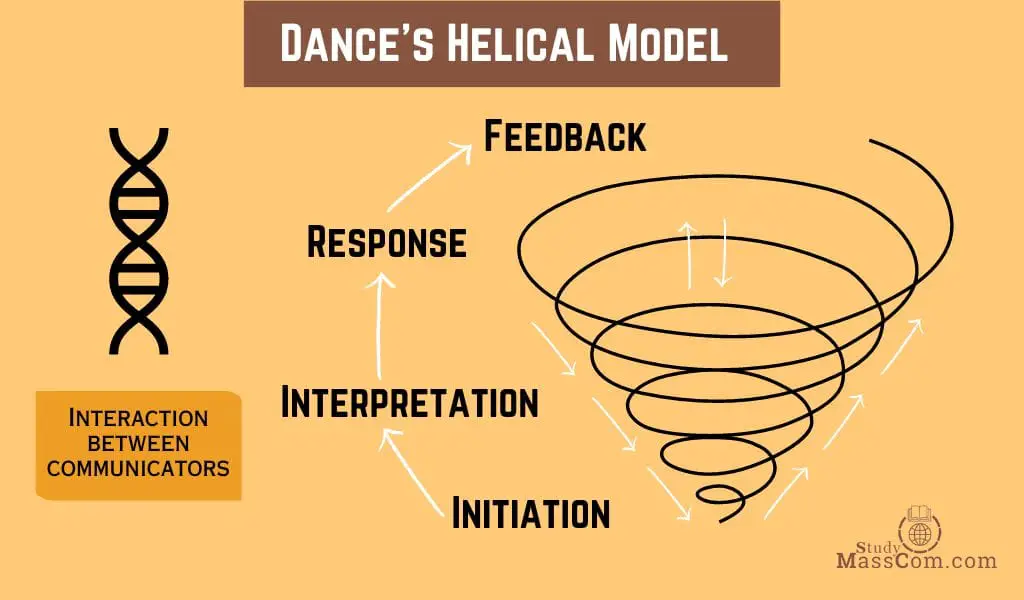
Along the helix, there are four key points: initiation, interpretation, response, and feedback. These points represent the stages of the communication process, with each interaction building upon the previous one, leading to deeper understanding and mutual adaptation between communicators. Additionally, the helix is surrounded by arrows pointing both upwards and downwards, illustrating the cyclical nature of communication and the ongoing evolution of interactions over time.
Features of Dance’s Helical Model of Communication
Frank Dance’s Helical Model of Communication is characterized by several key features that distinguish it from traditional linear models of communication. These features highlight the dynamic, continuous, and cyclical nature of communication processes. Let’s explore the prominent features of Dance’s Helical Model:
Continuous Process
The Helical Model emphasizes the continuous nature of communication, highlighting how each interaction builds upon previous exchanges. Rather than viewing communication as a series of isolated events, Dance suggests that it is an ongoing process that unfolds over time. Unlike linear models that depict communication as a one-time event with a clear beginning and end, Dance’s model emphasizes that communication is a dynamic cycle of interaction between individuals or groups.
Dynamic Interaction
In contrast to linear models that portray communication as a one-way flow from sender to receiver, the Helical Model emphasizes dynamic interaction between communicators. It recognizes that communication involves reciprocal exchanges of messages, with both parties actively contributing to the interaction.
Reciprocity
Communication is depicted as a reciprocal process in the Helical Model, where both parties contribute to the exchange of messages. Each interaction influences subsequent interactions, creating a dynamic interplay between the participants.
Spiral Progression
The helical shape of the model symbolizes the progressive nature of communication, where interactions spiral upward as they evolve over time. Despite revisiting similar themes or topics, each iteration of communication brings new insights and understanding. As communication unfolds, it spirals upward, indicating growth, development, and increased understanding between communicators. Each interaction builds upon previous exchanges, leading to deeper levels of engagement and comprehension.
Interconnectedness
Dance’s Helical Model highlights the interconnectedness of communication processes. It acknowledges that communication is influenced by various factors, including context, culture, and interpersonal dynamics. These factors shape the communication process and impact how messages are perceived, interpreted, and responded to.
Feedback Loop
Feedback plays a crucial role in the Helical Model, serving as a mechanism for closing the communication loop. After receiving a message, the receiver provides feedback to the sender, indicating their understanding, reaction, or response. This feedback informs subsequent interactions, allowing communicators to adjust their messages and improve mutual understanding.
Contextual Influence
The Helical Model acknowledges the influence of context on communication, recognizing that external factors such as culture, environment, and social dynamics can shape the communication process. Contextual cues provide additional layers of meaning to messages and impact how they are interpreted and responded to.
Revisiting and Revising
The Helical Model suggests that communication is not a linear progression but rather a cyclical process that involves revisiting and revising communication patterns. Communicators may revisit previous topics, ideas, or issues, approaching them from new perspectives and gaining deeper insights over time.
These features collectively characterize Dance’s Helical Model of Communication, providing a comprehensive framework for understanding the dynamic and continuous nature of communication processes. By highlighting the interactive, feedback-driven, and contextually embedded aspects of communication, this model offers valuable insights into the complexities of human interaction and information exchange.
Explore Gerbner’s Model of Communication and its advantages and disadvantages.
Advantages of Dance’s Helical Model of Communication
Frank Dance’s Helical Model of Communication offers several advantages over traditional linear models of communication. These advantages stem from its emphasis on the dynamic, continuous, and cyclical nature of communication processes. Let’s explore some of the key advantages of Dance’s Helical Model:
Reflects Real-Life Communication Dynamics
Unlike linear models that oversimplify the communication process by depicting it as a one-way flow from sender to receiver, the Helical Model reflects the complex and dynamic nature of real-life communication. It acknowledges that communication involves reciprocal exchanges of messages, feedback loops, and continuous interaction between communicators, which more accurately represents how communication unfolds in everyday interactions.
Check out the seven important steps in a communication process.
Encourages Active Participation
The Helical Model encourages active participation from both senders and receivers of messages. By emphasizing dynamic interaction and feedback loops, the model promotes engagement and collaboration between communicators, leading to more meaningful and effective communication outcomes.
Facilitates Mutual Understanding
Through its emphasis on continuous interaction and feedback, Dance’s model facilitates mutual understanding between communicators. By incorporating feedback into the communication process, misunderstandings can be addressed, and clarification can be sought, leading to enhanced comprehension and shared meaning.
Adaptable to Different Contexts
Dance’s Helical Model acknowledges the influence of context on communication and can be applied to various communication contexts, including interpersonal communication, group communication, organizational communication, and mass communication. Its flexibility allows it to be adapted and applied in diverse settings, making it a versatile framework for understanding communication dynamics.
Promotes Relationship Building
By recognizing communication as a continuous and evolving process, the Helical Model promotes relationship-building between communicators. Through repeated interactions and feedback exchanges, individuals can develop trust, rapport, and mutual respect, fostering stronger interpersonal connections and relationships.
Supports Conflict Resolution
Dance’s model provides a framework for addressing conflicts and resolving misunderstandings through open and honest communication. By revisiting and revising communication patterns, parties involved in conflict can engage in constructive dialogue, clarify intentions, and work towards resolving differences, leading to improved conflict resolution outcomes.
Encourages Reflective Practice
The Helical Model encourages communicators to reflect on their communication interactions and learn from them over time. By revisiting previous topics, ideas, or issues and approaching them from new perspectives, individuals can gain deeper insights into their communication patterns, strengths, and areas for improvement, fostering personal and professional growth.
Overall, Dance’s Helical Model of Communication offers several advantages that make it a valuable framework for understanding the complexities of human communication. Its emphasis on dynamic interaction, feedback loops, and contextual considerations provides a comprehensive and nuanced perspective on communication processes, making it relevant and applicable across various communication contexts.
Learn the advantages and disadvantages of White’s Model of Communication.
Disadvantages of Dance’s Helical Model of Communication
While Frank Dance’s Helical Model of Communication offers numerous advantages in understanding the dynamic nature of communication, it also has some limitations and disadvantages. These drawbacks stem from its complexity, potential oversimplification, and applicability in certain contexts. Let’s explore some of the disadvantages of Dance’s Helical Model:
Complexity
The Helical Model introduces a level of complexity to the understanding of communication processes. Its emphasis on continuous interaction, feedback loops, and contextual considerations may be challenging for individuals to grasp, especially those with limited background knowledge in communication theory. This complexity can make the model less accessible and practical for some users.
Limited Predictive Power
Unlike some other communication models that provide clear, step-by-step frameworks for understanding communication processes, the Helical Model’s emphasis on continuous interaction and cyclical patterns may limit its predictive power. While the model offers insights into how communication unfolds over time, it may not provide specific guidance on predicting communication outcomes or behaviors in certain situations.
Lack of Prescriptive Guidelines
Dance’s Helical Model is descriptive rather than prescriptive, meaning it describes communication processes as they occur without offering specific guidelines or strategies for improving communication effectiveness. While the model highlights the importance of feedback and adaptation in communication, it may not provide actionable recommendations for individuals seeking to enhance their communication skills or resolve communication challenges.
Overemphasis on Feedback
While feedback is a crucial component of the Helical Model, its overemphasis on feedback loops may overlook other important aspects of communication, such as message encoding, decoding, and channel selection. In some cases, communicators may rely too heavily on feedback without considering other factors that contribute to effective communication.
Difficulty in Measurement
The Helical Model’s focus on qualitative aspects of communication, such as interaction, interpretation, and adaptation, may pose challenges for measurement and empirical research. Unlike models that incorporate quantifiable variables and observable behaviors, Dance’s model may be more difficult to operationalize and test empirically.
Potential for Misinterpretation
Due to its abstract and conceptual nature, the Helical Model may be susceptible to misinterpretation or misapplication by users. Without a clear understanding of its underlying principles and assumptions, individuals may apply the model inappropriately or draw incorrect conclusions about communication processes.
Limited Applicability in Certain Contexts
While the Helical Model is applicable in various communication contexts, its emphasis on continuous interaction and feedback may be less relevant in certain one-way communication scenarios, such as public speaking or mass media communication. In these contexts, linear models or other frameworks may provide a more suitable approach to understanding communication dynamics.
Overall, while Frank Dance’s Helical Model of Communication offers valuable insights into the dynamic nature of communication processes, it also has limitations and disadvantages that warrant consideration. As with any communication model, it is important to critically evaluate its strengths and weaknesses and consider its applicability in specific contexts.
Explore the pros and cons of the Shannon-Weaver Model of Communication.
Applications of Dance’s Helical Model of Communication
Interpersonal Communication
The Helical Model offers valuable insights into interpersonal communication dynamics, highlighting the importance of continuous interaction and feedback in building and maintaining relationships. By understanding the cyclical nature of communication, individuals can enhance their communication skills and foster deeper connections with others.
Organizational Communication
In the context of organizations, the Helical Model can be applied to understand how communication flows within and between different levels of the hierarchy. By recognizing the interconnectedness of communication processes, organizations can improve internal communication strategies and promote collaboration and innovation.
Conflict Resolution
The Helical Model provides a framework for resolving conflicts by emphasizing the importance of revisiting and revising communication patterns. By engaging in open and honest dialogue, parties involved in conflict can address underlying issues and work towards mutual understanding and resolution.
Media and Technology
In today’s digital age, the Helical Model can be applied to analyze how communication unfolds through various media and technological platforms. From social media interactions to virtual meetings, understanding the cyclical nature of communication can help individuals navigate and make sense of complex communication landscapes.
Read about Berlo’s SMCR Model of Communication.
Examples of Dance’s Helical Model of Communication
The Helical Model of Communication, proposed by Frank Dance, can be observed in various real-life communication scenarios across different contexts. Here are some examples that illustrate the principles of Dance’s Helical Model:
Interpersonal Communication
Consider a conversation between two friends planning a weekend trip.
- Initiation: One friend initiates the conversation by suggesting the idea of going on a trip.
- Interpretation: The other friend interprets the suggestion based on their interests, preferences, and availability.
- Response: The second friend responds by expressing enthusiasm and suggesting potential destinations.
- Feedback: The first friend provides feedback by sharing their thoughts on the suggested destinations and discussing logistics.
Organizational Communication
Imagine a team meeting to discuss a new project at work.
- Initiation: The team leader initiates the meeting by outlining the objectives and agenda.
- Interpretation: Team members interpret the information presented based on their roles, responsibilities, and expertise.
- Response: Team members respond by asking questions, providing input, and discussing ideas related to the project.
- Feedback: The team leader provides feedback by addressing questions, summarizing key points, and clarifying expectations for the next steps.
Mass Communication
Consider a television news program covering a current event.
- Initiation: The news anchor initiates the broadcast by introducing the topic and providing background information.
- Interpretation: Viewers interpret the information presented based on their knowledge, beliefs, and perspectives.
- Response: Viewers respond by forming opinions, discussing the event with others, or taking action based on the information received.
- Feedback: The news program receives feedback from viewers through audience surveys, social media comments, and viewer ratings, which may influence future coverage and programming decisions.
Check out some of the important Mass Communication Theories and Models.
Online Communication
Imagine a discussion thread on a social media platform about a controversial topic.
- Initiation: A user initiates the discussion by posting a comment or question related to the topic.
- Interpretation: Other users interpret the initial post and subsequent comments based on their own viewpoints and experiences.
- Response: Users respond by posting their opinions, sharing relevant information, and engaging in dialogue with others.
- Feedback: Users provide feedback by reacting to posts, liking or commenting on comments, and expressing agreement or disagreement with various viewpoints.
Intercultural Communication
Let’s imagine a cross-cultural business negotiation between representatives from different countries.
- Initiation: The negotiation begins with an initial proposal or offer from one party.
- Interpretation: Each party interprets the proposal based on their cultural norms, values, and communication styles.
- Response: Parties respond by presenting counteroffers, expressing concerns, and negotiating terms.
- Feedback: Negotiators provide feedback by acknowledging concessions, seeking clarification, and adjusting their positions based on the interaction.
These examples demonstrate how the Helical Model of Communication can be observed in various communication contexts, highlighting the dynamic and continuous nature of communication processes characterized by interaction, interpretation, response, and feedback.
Learn about Lasswell’s Model of Communication and its advantages and disadvantages.
Conclusion
Frank Dance’s Helical Model of Communication offers a comprehensive framework for understanding the dynamic and continuous nature of communication. By conceptualizing communication as a spiral process, Dance highlights the interconnectedness of interactions and the influence of context on the communication process. The Helical Model has widespread applications across various domains, including interpersonal communication, organizational communication, conflict resolution, and media studies. As communication continues to evolve in an increasingly interconnected world, the insights provided by the Helical Model remain relevant for understanding and navigating complex communication dynamics.
What is the Gatekeeping Theory? Learn more with us!
FAQs
The Helical Model of Communication, proposed by Frank Dance, depicts communication as a continuous, dynamic process characterized by interaction, interpretation, response, and feedback. Unlike linear models, it emphasizes the cyclical nature of communication, where interactions spiral upward over time, leading to deeper understanding and mutual adaptation between communicators. This model recognizes the interconnectedness of communication processes and the influence of context on message interpretation. It highlights the importance of feedback in closing the communication loop and fostering meaningful engagement between participants. Overall, the Helical Model provides a comprehensive framework for understanding the complexities of human communication.
Dance’s Helical Model is important in communication studies because it offers a nuanced understanding of communication as a dynamic, continuous process. By emphasizing interaction, interpretation, and feedback, it captures the complexity of real-life communication dynamics. This model highlights the interconnectedness of communication processes and the role of context in shaping message interpretation. Its recognition of the cyclical nature of communication and the significance of feedback contributes to a deeper understanding of how communication unfolds over time. Overall, Dance’s Helical Model provides a comprehensive framework that enhances our understanding of the complexities of human communication in various contexts.


